Jan 2nd 2023 - Monica Cunanan
What is a Crepe? How to Make it, Origins, and More!
Want to make crêpes like the ones at your favorite French restaurant? You wouldn't believe how simple it is to cook these traditional crepes at home. Read on to find out more about this French Food.
What is a Crepe?
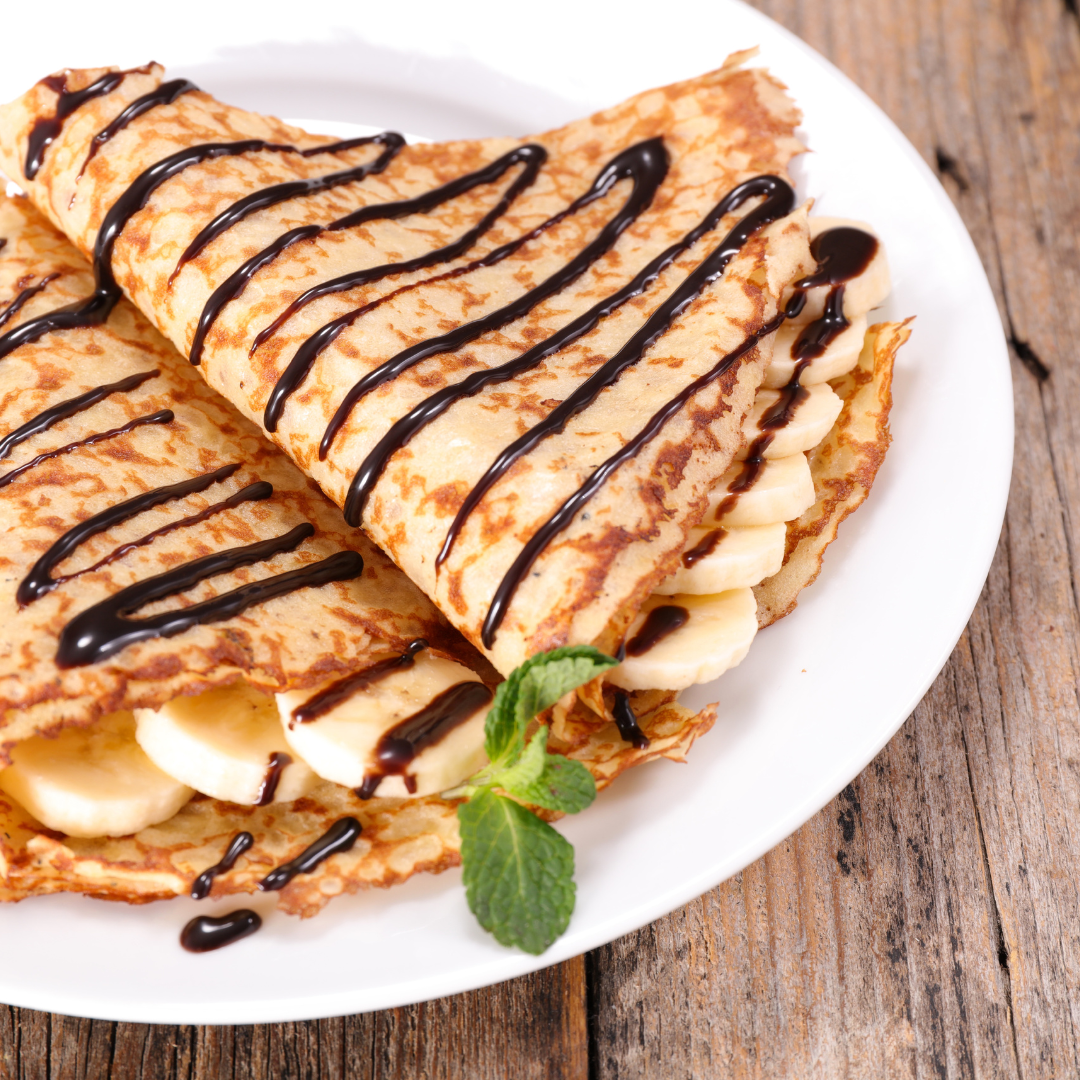
Simply put, a crepe is a fragile, paper-thin pancake. The Latin term is Crispus. This means curled, which is where the name crepe actually originates. This alludes to the way that this thin pancake can curl up at the edges. It can even fold into a wrap that can be consumed.
Since its invention in Brittany, France, in the early 12th century, the crepe has been a favorite of many, this famous French meal may only be made only of batter, but the results are excellent.
Most crepes are created using a relatively basic recipe and this includes sprinkling a little butter or oil on the stove before adding water, salt, and flour.
A flat stovetop with some oil or butter is used to make crepes. The batter is smoothed out and spread out evenly with a wooden scraper or spatula.
The batter becomes crisped up by the heat from the burner. This results in an incredibly thin and delicate pancake that is ready to be folded and topped with your preferred flavors and sauces.
Crepe vs. pancake
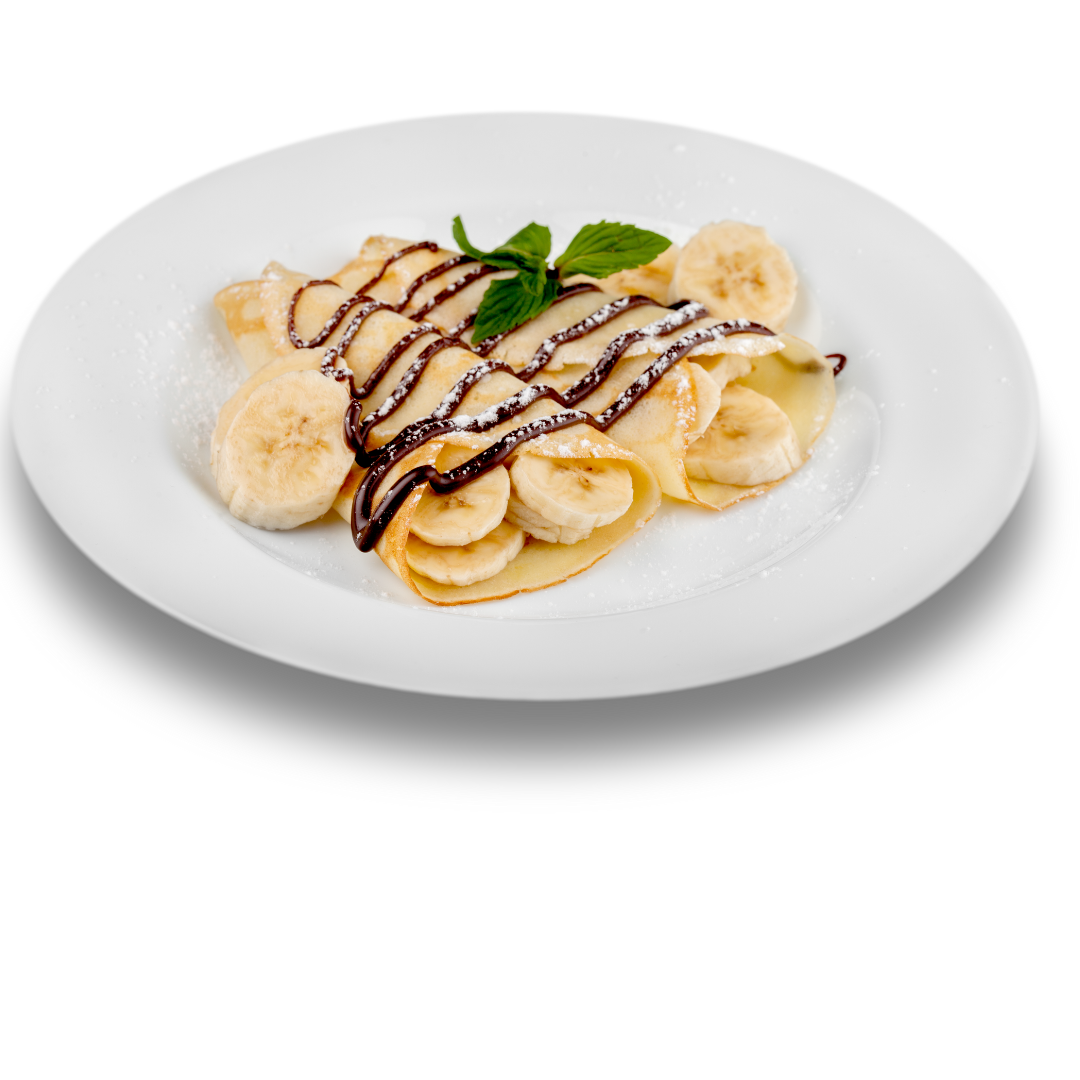
Crepes are frequently compared to thin pancakes. The pancake batter, which contains baking powder to aid in the rise and fluffiness of the pancakes, is one notable distinction.
You probably picture a pancake as a fluffy, thick circle with a pad of butter on top but in terms of culinary terminology, a crepe is a pancake that has been flattened out on a cast-iron griddle, folded, and then topped with savory or sweet contents.
Crepes are a year-round favorite in France, especially on Sundays when families get together and almost everyone in France has a crepe pan in the kitchen.
What Are Crêpes Made Of?
With simple components you probably already have on hand, making crepes is simple:
- Flour: One cup of all-purpose flour is the base for these simple French crepes.
- Eggs: They serve as a binder, holding the batter together. Milk: Moisture from milk keeps the crepes tender.
- Water: Water thins the batter.
- Salt: A pinch of salt brings out the flavor of the dish.
- Butter: Butter gives the crepes richness and moisture.
How to Make Crêpes
Homemade crepes are simpler to make than you would imagine. The recipe below includes a complete ingredient list and step-by-step directions, but first, let's review the fundamentals:
An overview of what to expect when preparing homemade crêpes is given below:
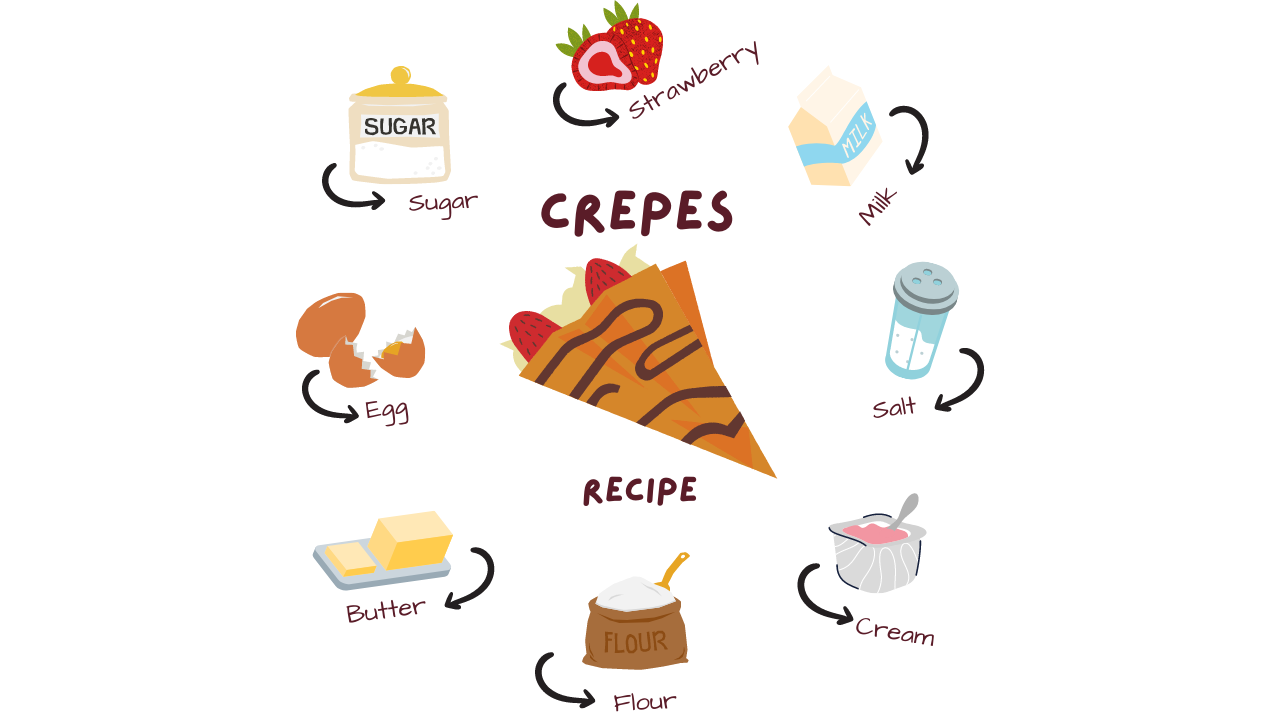
- Eggs and flour are mixed together.
- Water and milk are gradually added.
- Scoop the batter onto the hot griddle or crepe maker
- Cook just until the bottom begins to become slightly golden.
- Cook until done on both sides, then turn.
Directions

- Combine the flour, eggs, and milk in a large mixing bowl. Stir in the wet ingredients such as milk and water gradually. Add salt and melted butter when you're done.
- A griddle or frying pan should be preheated over medium-high heat with some oil. Use about 1/4 cup of batter to produce one crêpe, which you can either pour or scoop onto the griddle. Tilt the pan in a circular motion. This is to make certain that the batter coats the surface evenly.
- The crêpe should be cooked for one to two minutes, or until the top is dry and the bottom is just beginning to brown. By circling the edge of the griddle with a spatula, the crêpe can be easily flipped. Cook for an additional minute or so, or until the reverse side is just beginning to brown. Serve hot.
Crêpe Filling Ideas
You can top and fill your crepes with your favorite crepe fillings in any way you choose! Popular choices include whipping cream, fruit sauce, cream cheese, fresh fruit, and chocolate hazelnut spread (such as Nutella). Cheese, meats, and veggies can all be added to crepes to make them savory.
Tips to Make the Perfect Crepe?
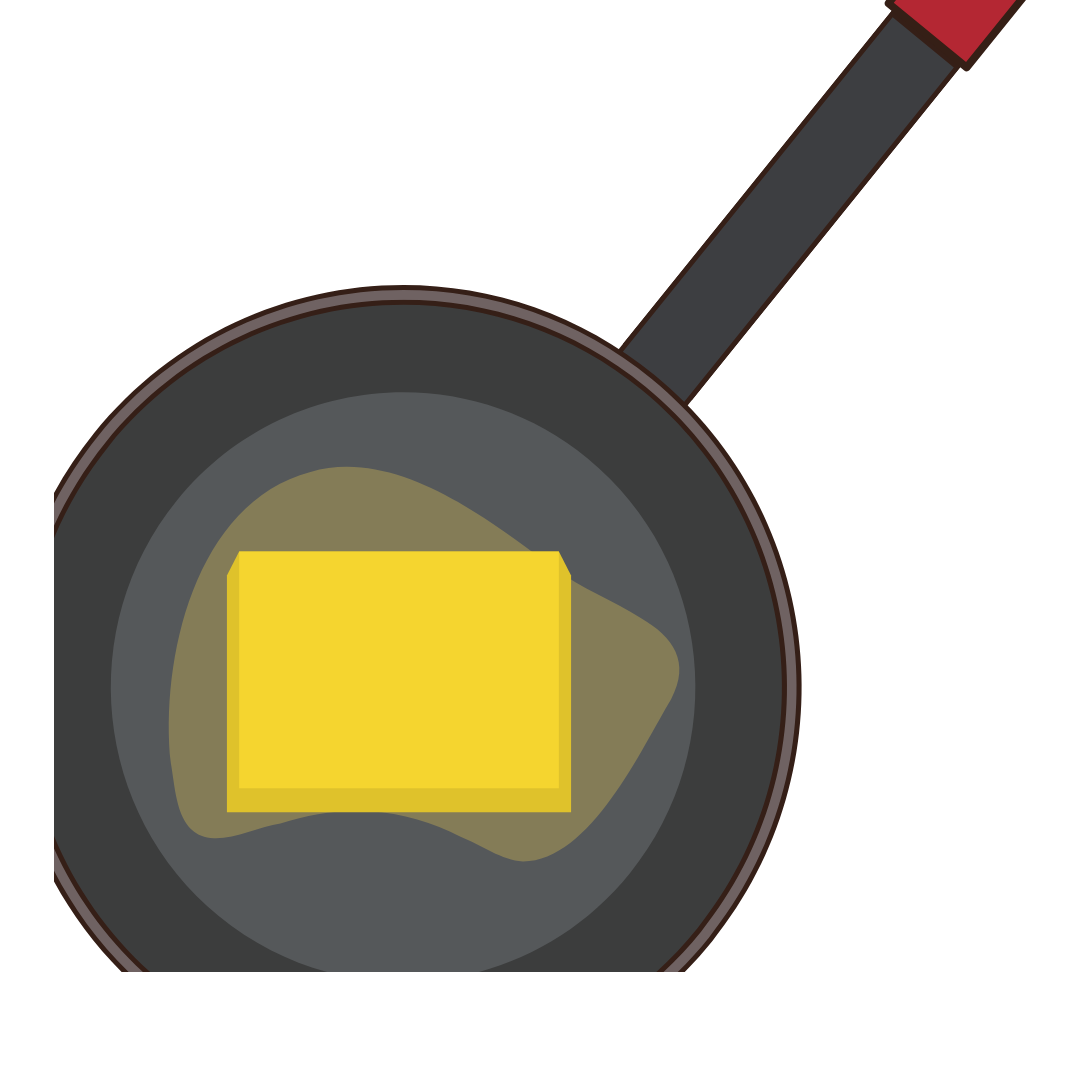
The secret to preparing the ideal crepe is to include a cube of melted butter and a cube of melted brown butter in the batter. It's vital to keep an eye on the crepe while it cooks to make sure it doesn't overheat and get dry. Butter also gives a great nutty sweetness to the crepe in addition to preventing it from sticking to the pan.
A non-stick pan will do if you don't have access to a cast-iron skillet.
Pro tip: There are a few easy ingredient tweaks you can make if you're on the keto diet. To make keto crepes, use coconut or almond flour for the regular flour. You can then use unsweetened nut milk in lieu of cow's milk, and use a sugar alternative like stevia or Swerve in place of the sugar.
How to eat a crepe?

Crepes are fantastic because of how versatile they are. You can customize your crepe by adding your preferred syrups, sauces, and a variety of fillings.
Try pairing your crepes with maple syrup and bacon if you enjoy conventional pancakes and if you have a sweet tooth, you can fill your crepe to the brim with sweet fillings such as Nutella, powdered sugar, and strawberries for a decadent and divine taste!
Some people like savory crêpes over sweet ones. To make savory fillings, you can try stuffing a crepe with cheese and spinach for a more tasty outcome than something sickly and sugary. The majority of crepes are served wrapped, rather like a gyro, and with a napkin wrapped around them for mess-free eating.
For a more elegant eating experience, you can have them served wrapped on a plate so you can eat them with a knife and fork. Where you receive your crepe will determine how you consume it.
In either case, your taste senses will appreciate it and you will develop into a crepe aficionado!
Nutrition Facts (per serving)
| 216 | Calories |
| 9g | Fat |
| 26g | Carbs |
| 7g | Protein |
2,000 calories per day are the basis for the percent daily values. Depending on how many calories you need each day, your figures may be greater or lower.
Not all components have nutritional data available. Based on data on available nutrients, the amount.
(-) Information on this nutrient is not yet available. Before making this recipe for personal use if you are on a medically imposed restrictive diet. Make sure to speak with your doctor or trained dietitian.
What are the origins of the crepe?
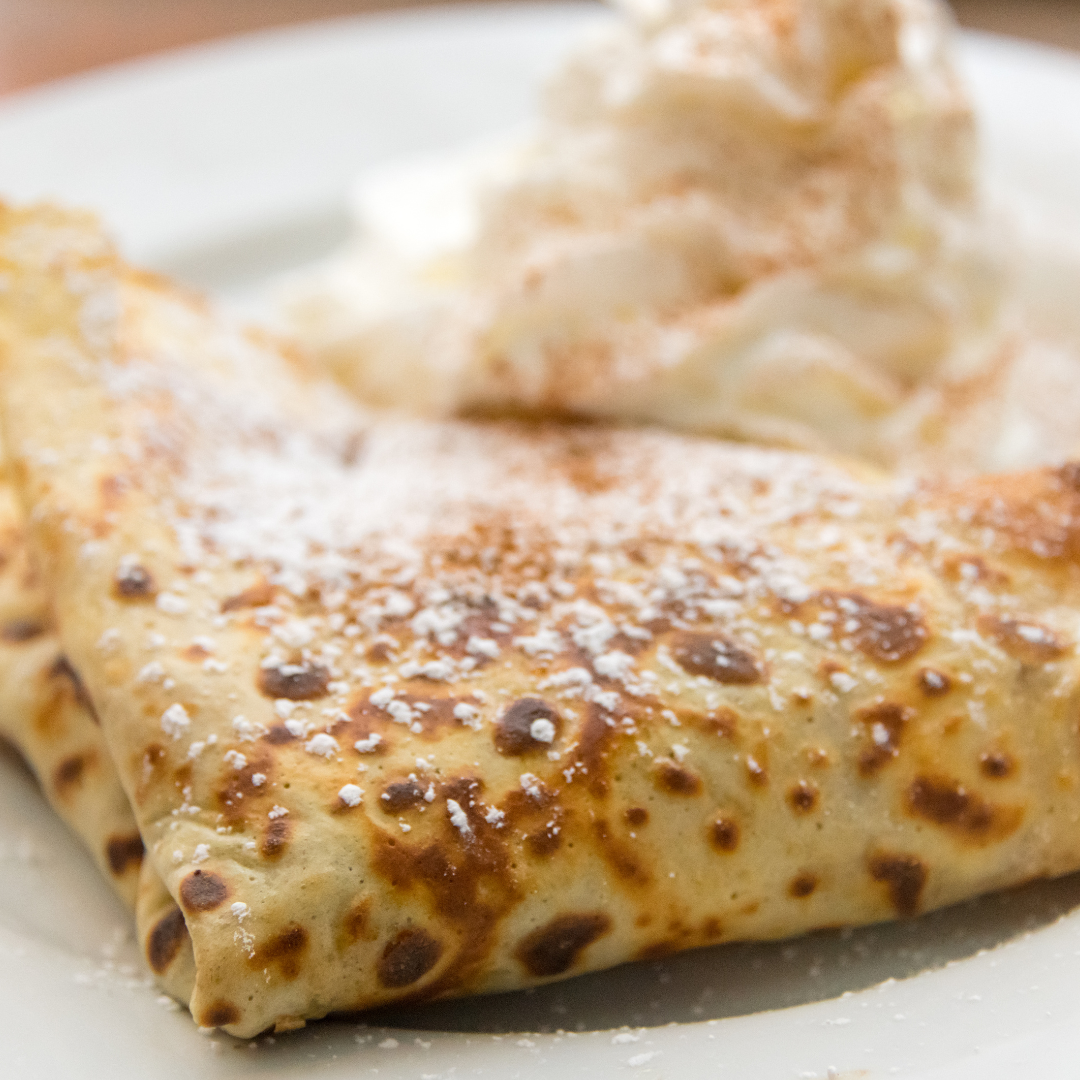
The first foods to be presented at dinner tables were buckwheat crepes, which originated in Brittany, a region in northwest France. White flour crepes were later developed as the foundation for sweet crepes, but they were primarily appreciated as bread until savory variations were devised.
How to Store Crêpes
Wax paper is placed between each layer of the crepe stack. They can be kept in the refrigerator for up to two days. Make sure to put them in an airtight container or zip-top plastic wrap. The crêpes can be kept frozen for up to two months.

